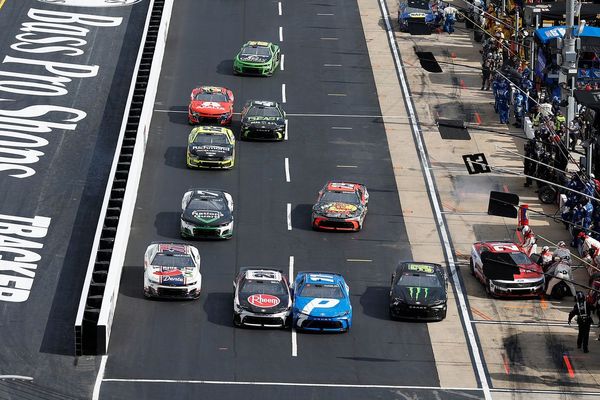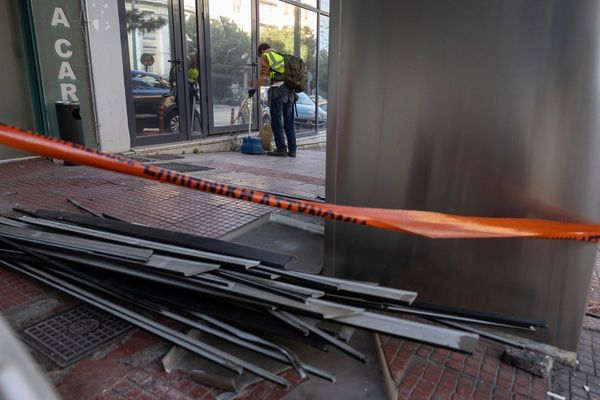
Kamala Harris’s surge in popularity since replacing Joe Biden as the Democratic presidential nominee has opened up a surprise second path to victory in November, according to a fresh analysis of recent voter surveys.
An aggregate of polls modelled by the Washington Post shows that the US vice-president has become newly competitive in four southern Sun belt states that were previously leaning heavily towards Donald Trump, the Republican nominee and former president.
If the trend holds, it means Harris could eke out an electoral college victory either by winning those states – Georgia, Arizona, Nevada and North Carolina – or, alternatively, by capturing three swing states in the midwestern Rust belt, Pennsylvania, Michigan and Wisconsin.
Trump, by contrast, would need to capture both groups of states to earn the 270 electoral college votes necessary to secure victory, according to the model.
The opening up of a potential second front in Harris’s pathway to victory may be the biggest boon yet from her elevation to the top of the Democratic ticket in place of Biden, whose only path to staying in office appeared to hinge on winning the three Rust belt states.
Harris has gained an average of two percentage points nationally, and 2.1% in seven battleground states, since replacing Biden, who pulled out of the race on 21 July after weeks of intense pressure over a bad debate performance the previous month.
The transformation in the party’s chances of retaining the White House amounts to a “reset” of the election race and might even make Harris a “slight favourite”, according to the analysis. It is largely due to renewed impetus in key swing states under the candidacy of Harris and Tim Walz, the Minnesota governor who she chose as her running mate.
The outcome of US presidential elections is determined not by the popular vote, but by which candidate wins a majority of 538 electoral college votes, which are allotted state by state.
Polls show many things, but in aggregate they appear to suggest that Harris now leads in the Rust belt states of Pennsylvania and Wisconsin, and has closed the gap in another, Michigan, to within one point of Trump, the former president and Republican nominee. Biden won all three states, albeit by narrow margins, in 2020.
But she has also significantly improved on Biden’s post-debate standing – when the president’s poll position evaporated badly in all key states and even began to deteriorate in states previously considered safe – in three Sun belt states, Nevada, Arizona and Georgia, plus North Carolina, where she has pulled close enough to Trump to be within the polls’ margin of error.
Biden won the first of those three states, again by narrow margins, in 2020 but lost North Carolina by less than two percentage points. Amid Harris’s recent surge, Democratic strategists have started to envision carrying the state, despite the party only having won it once in presidential elections since 1980.
The uptick in support makes her competitive in more states than Trump that would enable her to reach the required 270 electoral college votes.
However, Harris still trails Trump in the final tally, if the polls are accurate and the election were held now.
Another boon to Harris is a Washington Post/Ipsos poll that shows her choice of Walz as running mate playing better with voters than Trump’s selection of JD Vance, who has seemed to hit trouble with female voters because of his hardline anti-abortion views and track record of misogynistic comments about childless women.
The survey showed 39% of voters having a favourable view of Walz – who has been targeted by Republicans because of his left-leaning policies as Minnesota governor – and 30% unfavourable, giving him a positive rating of 9%. Vance, on the other hand, recorded a 32% favourable rating against 42% who saw him unfavourably, a negative rating that chimes with other polls, some of which have measured him as the most unpopular vice-presidential pick in history.
Reflecting her campaign’s bullishness about its prospects in the state as it approaches next week’s Democratic national convention, Harris was due to make a keynote economic speech in Raleigh, North Carolina, on Friday where she was expected to set out policies on price gouging, rising food prices and high housing costs. All are areas that Republicans see as potential vulnerabilities for Harris.
Vance, a senator for Ohio, was due to speak in the Wisconsin city of Milwaukee, following appearances in Pennsylvania and Michigan in recent days, mirroring the Trump campaign’s recognition of the need to win the states.







